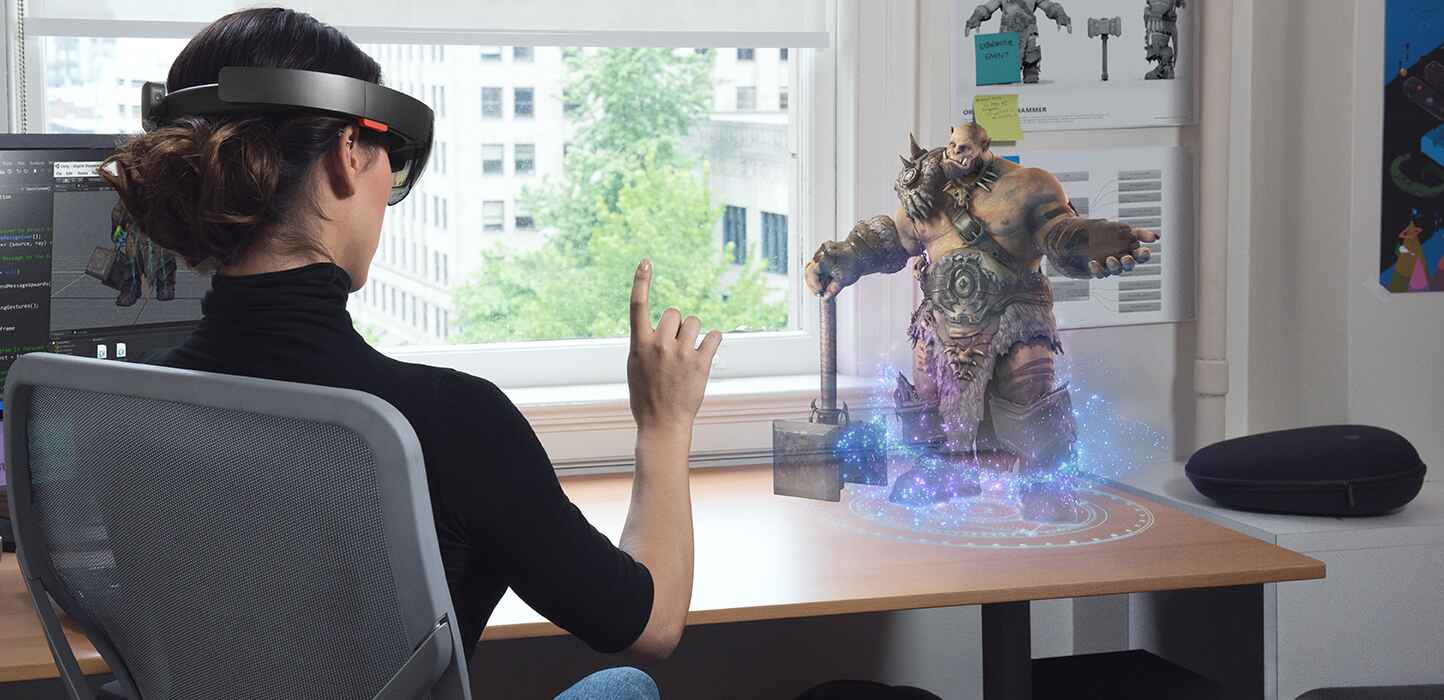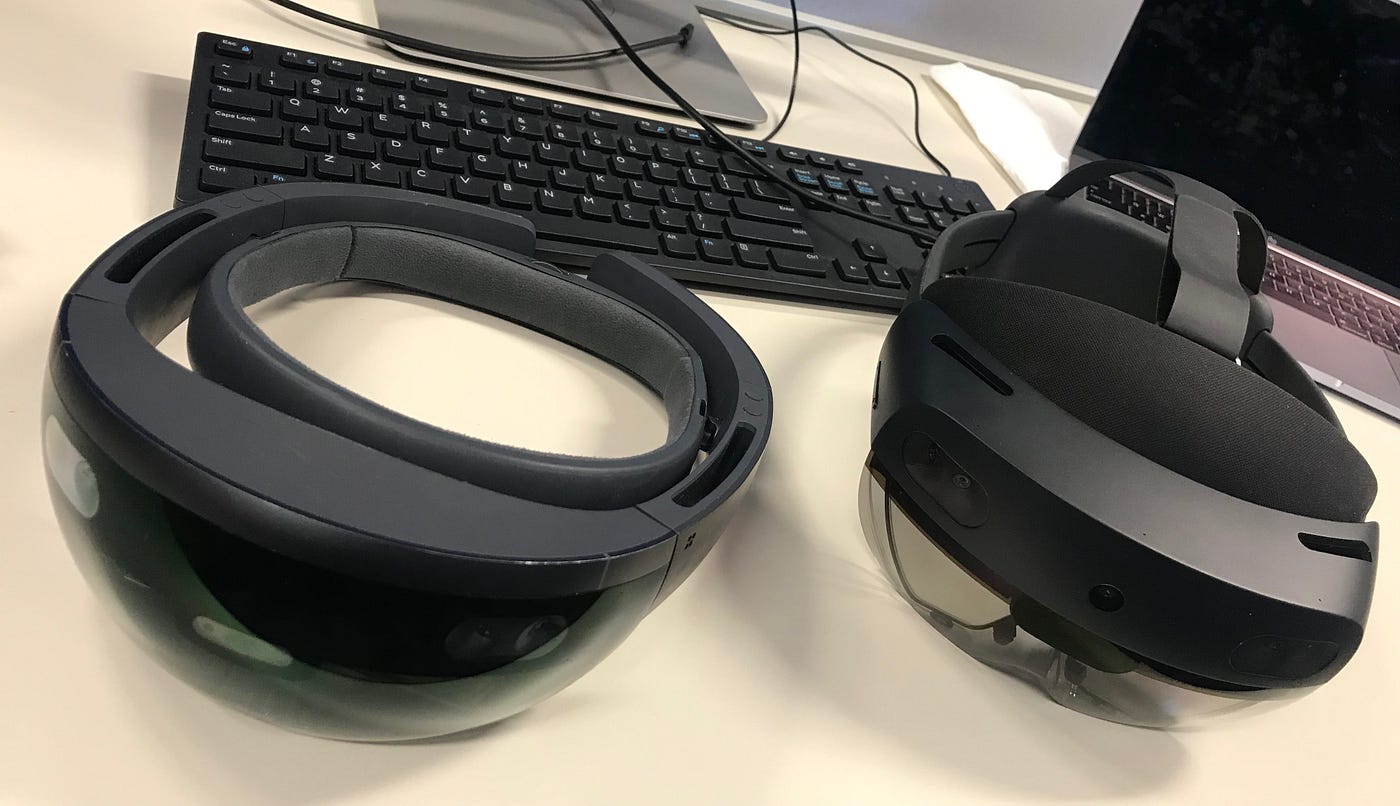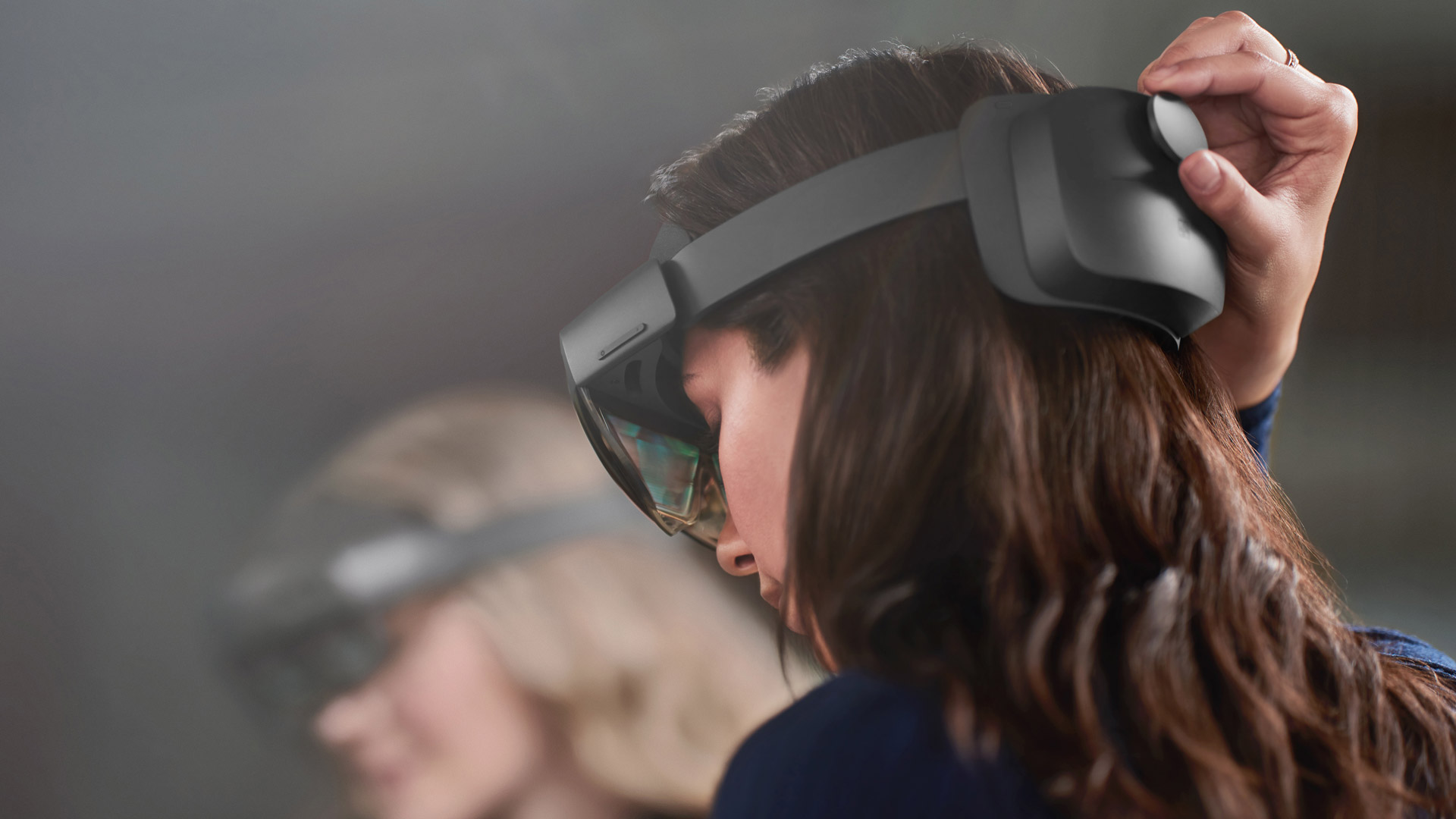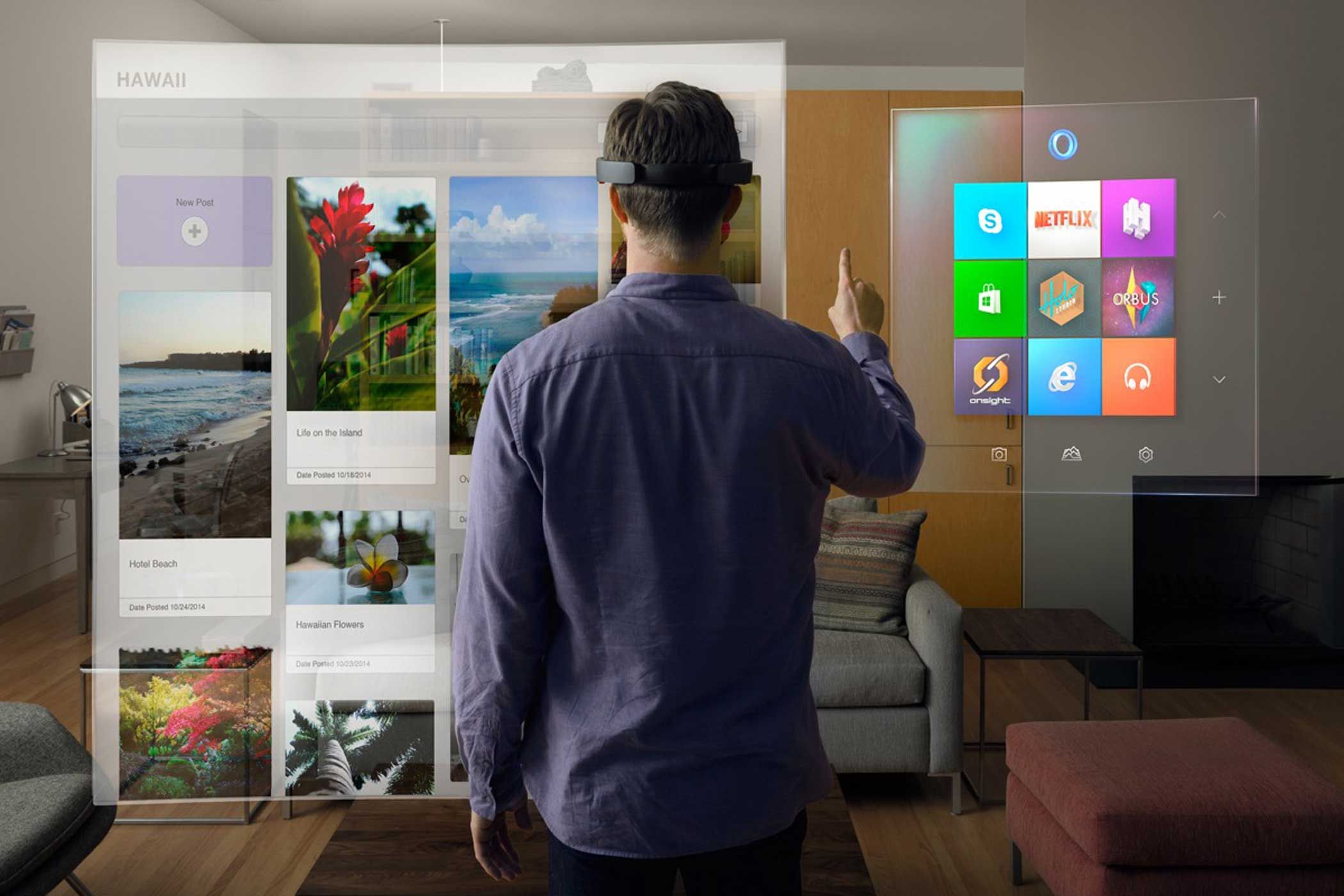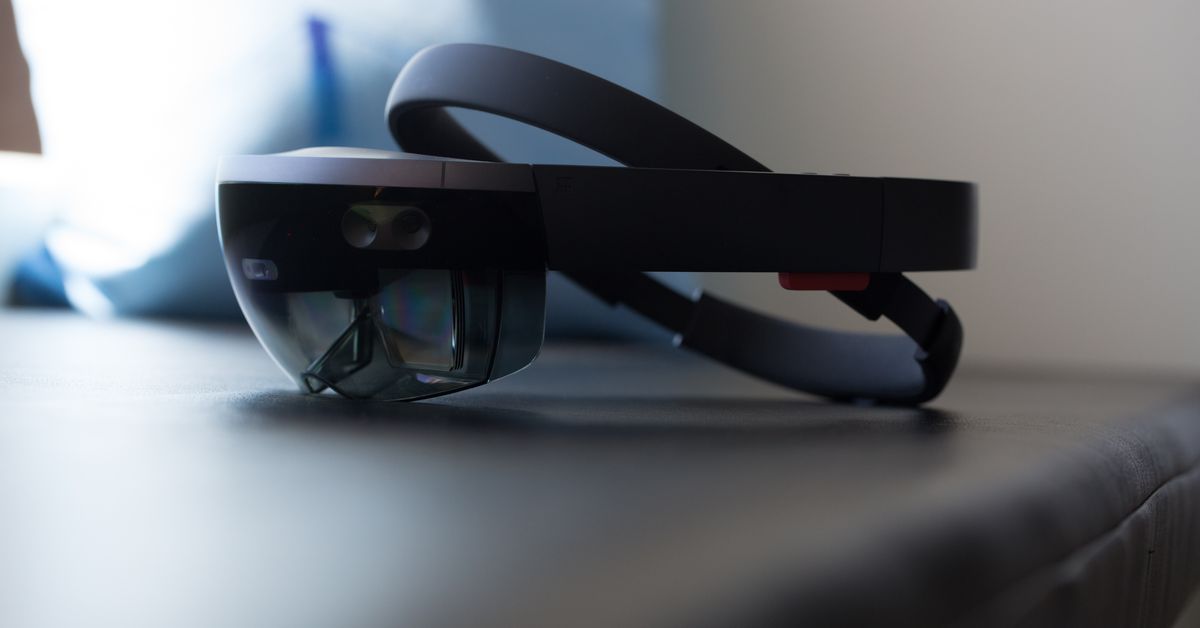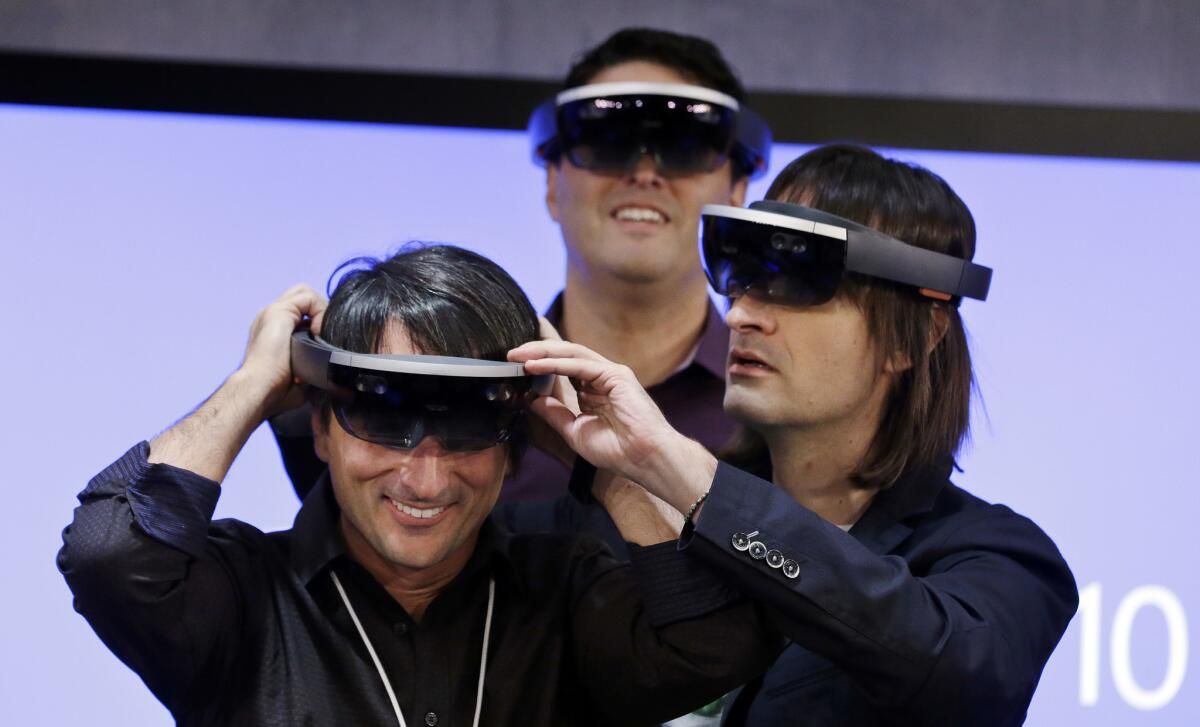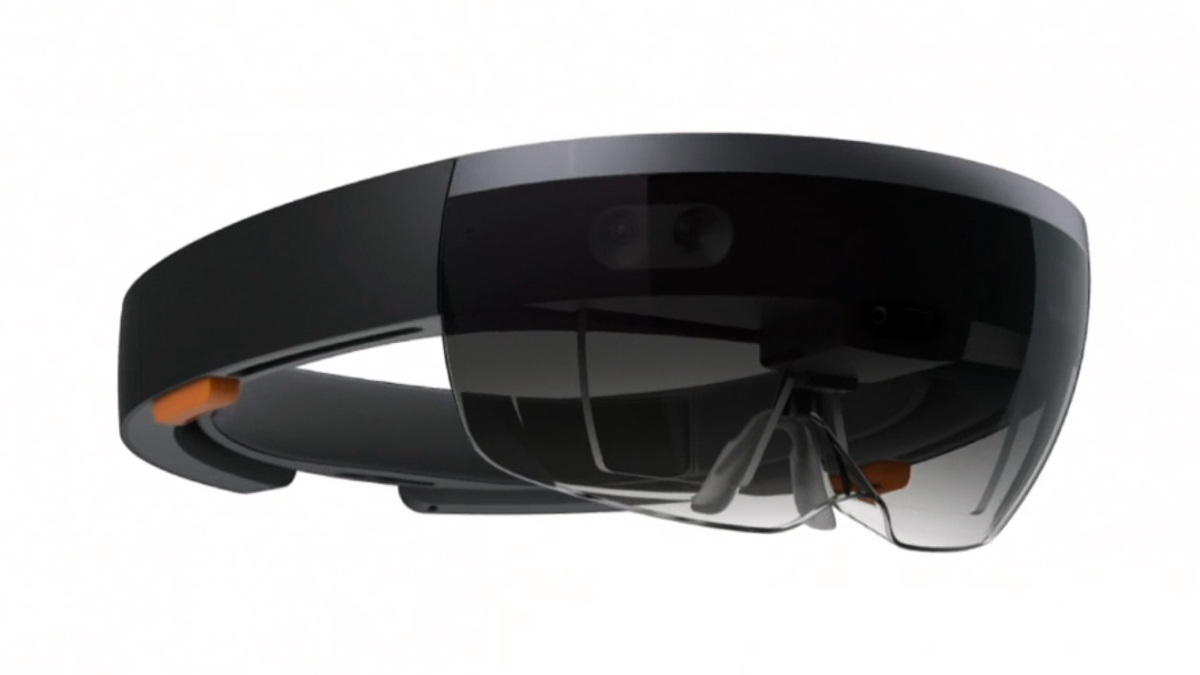Introduction
Welcome to the exciting world of object tracking with HoloLens! In this article, we will explore the concept of object tracking, understand why HoloLens is an ideal platform for this technology, and learn how to set up a development environment to create your own object tracking app.
Object tracking is a process that involves identifying and following the movement of specific objects in real-time. It has a wide range of applications, including augmented reality, virtual reality, robotics, and surveillance systems. By accurately tracking objects, we can create immersive and interactive experiences that seamlessly blend the digital and physical worlds.
When it comes to object tracking, HoloLens offers numerous advantages. As an advanced mixed reality headset, HoloLens combines cutting-edge hardware with powerful software capabilities, enabling precise tracking and immersive visualization. With its built-in sensors, cameras, and spatial mapping capabilities, HoloLens can accurately track objects in the real world, allowing developers to create compelling mixed reality experiences.
To get started with object tracking on HoloLens, you need to set up your development environment. This involves installing the necessary software tools and configuring your HoloLens device for development. Once the environment is ready, you can choose the right object tracking technique based on your specific needs and start creating your own app.
In this article, we will guide you through the process of setting up your development environment, installing the required software tools, and creating a basic object tracking app. We will also explore how to handle multiple objects and troubleshoot common issues that may arise during development.
Whether you are a seasoned developer or just starting, this article will provide you with the knowledge and resources to dive into the exciting world of object tracking with HoloLens. So, let’s get started and unlock the potential of mixed reality through object tracking!
What is Object Tracking?
Object tracking is a technique used to accurately identify and follow the movement of specific objects in real-time. It involves analyzing video frames or sensor data and continuously updating the position and orientation of the tracked objects. This technology plays a crucial role in various fields, including augmented reality, robotics, surveillance, and computer vision.
The primary goal of object tracking is to enable machines, such as cameras or robots, to perceive and understand the surrounding environment. By efficiently tracking objects, these machines can interact with their surroundings, gather data, and make informed decisions based on the movement and behavior of the tracked objects.
Object tracking algorithms employ various approaches to achieve accurate tracking. Some popular techniques include:
- Template Matching: This technique involves comparing a template image of the object with the current frame of the video to find a match. It is especially useful when the object being tracked has distinct features or patterns.
- Optical Flow: Optical flow methods estimate the motion of the object by analyzing the pixel-level changes in consecutive frames. It works by detecting the displacement of pixels between frames to determine the object’s movement.
- Feature-based Tracking: Feature-based tracking relies on identifying and tracking specific features or points on the object. These features can include corners, edges, or distinctive patterns. The movement of these features is then used to track the entire object.
- Deep Learning-based Tracking: With the advancements in deep learning, object tracking methods based on neural networks have gained popularity. These techniques involve training a deep learning model to detect and track objects based on vast amounts of labeled data.
Object tracking has numerous applications across various industries. In augmented reality, object tracking allows virtual objects to be placed and interacted with in the real world, creating immersive and engaging experiences. In robotics, accurate object tracking enables robots to navigate and manipulate objects with precision. In surveillance systems, object tracking helps monitor and track individuals or objects of interest in real-time.
As technology continues to advance, object tracking is becoming increasingly sophisticated and accurate. The combination of object tracking with other technologies, such as depth sensing and spatial mapping, opens up endless possibilities for creating innovative and immersive experiences.
In the next sections, we will explore why HoloLens is an ideal platform for object tracking, how to set up your development environment, and the different techniques you can use to implement object tracking with HoloLens.
Why Use HoloLens for Object Tracking?
HoloLens, developed by Microsoft, is a ground-breaking mixed reality headset that offers unique advantages for object tracking. Here are several reasons why HoloLens is an ideal platform for implementing object tracking:
- Advanced Sensors and Cameras: HoloLens is equipped with a variety of sensors and cameras that enable precise tracking of objects in the real world. These include depth sensors, a 2.4-megapixel video camera, and an infrared camera, allowing for accurate detection and measurement of objects in the environment.
- Spatial Mapping: HoloLens utilizes spatial mapping technology to create a detailed 3D map of the surrounding environment. This map provides valuable information about the physical space, which can be used for object tracking. By understanding the spatial layout, HoloLens can accurately place virtual objects in the real world and track their movements relative to the environment.
- Hands-free Interaction: One of the key advantages of HoloLens is its hands-free interaction. With its built-in sensors and gesture recognition capabilities, users can interact with virtual objects using natural gestures and movements. This makes HoloLens an ideal platform for object tracking, as users can seamlessly interact and manipulate tracked objects without the need for additional physical input devices.
- Immersive Visualization: HoloLens provides a high-resolution display and transparent lenses, creating a seamless blend of the virtual and real world. This immersive visualization allows users to see tracked objects overlaid onto their surroundings, enhancing situational awareness and providing a truly immersive mixed reality experience.
- Powerful Development Tools: Microsoft provides a comprehensive set of development tools and APIs specifically designed for HoloLens. These tools enable developers to easily access and utilize the object tracking capabilities of HoloLens, allowing for the creation of innovative and interactive mixed reality applications.
By harnessing the advanced features and capabilities of HoloLens, developers can implement sophisticated object tracking solutions that can revolutionize various industries. Whether it’s creating engaging augmented reality experiences, enhancing robotic navigation and interaction, or enabling real-time surveillance and monitoring, HoloLens offers limitless possibilities for object tracking applications.
In the following sections, we will guide you through the process of preparing your HoloLens for object tracking, setting up your development environment, and creating your own object tracking app using HoloLens.
Preparing Your HoloLens for Object Tracking
Before you can start implementing object tracking with HoloLens, it’s important to ensure that your device is properly set up and configured. Here are the steps to prepare your HoloLens for object tracking:
- Update HoloLens: Make sure that your HoloLens device is running the latest software updates. These updates often include improvements and bug fixes that can enhance the performance and stability of object tracking applications.
- Enable Developer Mode: To deploy and test your object tracking apps on HoloLens, you need to enable Developer Mode. This can be done by going to the HoloLens settings, selecting “Update & Security,” and then selecting “For developers.” Enable the “Developer mode” option.
- Enable Device Portal: Device Portal is a web-based interface that allows you to remotely manage and debug your HoloLens device. To enable Device Portal, go to the HoloLens settings, select “Update & Security,” then “For developers,” and finally enable the “Device discovery” option.
- Connect to Device Portal: Once Device Portal is enabled, you can connect to it by opening a web browser on your PC and entering the IP address of your HoloLens device. This will give you access to a range of developer tools and settings for your HoloLens.
- Set up Unity and Visual Studio: To develop object tracking apps for HoloLens, you will need to install Unity, a popular game development engine, and Visual Studio, a powerful integrated development environment (IDE). Make sure to download and install the versions specifically designed for HoloLens development.
- Set up HoloToolkit: HoloToolkit is a collection of scripts, components, and prefabs designed to simplify the development of mixed reality apps. Download and import the HoloToolkit package into your Unity project to take advantage of its object tracking and spatial mapping functionalities.
Once you have completed these preparations, your HoloLens device will be ready for object tracking development. By enabling Developer Mode, Device Portal, and setting up the necessary development tools, you can start building immersive mixed reality experiences that involve accurate object tracking.
In the next section, we will explore the different object tracking techniques you can choose from when developing your HoloLens app. Each technique has its own strengths and considerations, so understanding these options will help you choose the most suitable approach for your specific project.
Choosing the Right Object Tracking Technique
When it comes to implementing object tracking with HoloLens, there are various techniques you can choose from. Each technique has its own strengths and considerations, so it’s important to understand these options and select the most suitable approach for your project. Here are some popular object tracking techniques:
- Template Matching: Template matching involves comparing a template image of the object with the current frame of the video to find a match. This technique works well when the object being tracked has distinct features or patterns that can be easily recognized.
- Optical Flow: Optical flow methods estimate the motion of the object by analyzing the pixel-level changes in consecutive frames. By detecting the displacement of pixels between frames, optical flow can track the movement of the object. This technique is effective when the object’s motion is relatively smooth and consistent.
- Feature-based Tracking: Feature-based tracking involves identifying and tracking specific features or points on the object. These features can include corners, edges, or distinctive patterns. The movement of these features is then used to track the entire object. Feature-based tracking is robust and works well even when the object undergoes significant changes in appearance and scale.
- Deep Learning-based Tracking: With the advancements in deep learning, object tracking methods based on neural networks have gained popularity. These techniques involve training a deep learning model to detect and track objects based on vast amounts of labeled data. Deep learning-based tracking offers high accuracy and works well in complex scenarios where the appearance of the object can vary significantly.
The choice of object tracking technique depends on various factors, including the characteristics of the tracked object, the complexity of the tracking scenario, and the performance requirements of your application. It’s essential to consider the specific needs of your project and choose the technique that best aligns with your objectives.
Additionally, when developing an object tracking app with HoloLens, you can leverage the power of HoloToolkit, which provides built-in support for object tracking and spatial mapping functionalities. HoloToolkit simplifies the implementation of object tracking by providing ready-to-use scripts, components, and prefabs that can be easily integrated into your HoloLens project.
Experimenting with different tracking techniques and adapting them to your specific use case can help you achieve the desired level of accuracy and performance. It’s recommended to prototype and test your chosen technique iteratively to refine and optimize the tracking capabilities of your HoloLens app.
In the next section, we will walk you through setting up your development environment for HoloLens app development. This will ensure that you have all the necessary software tools and configurations in place to start building your object tracking application.
Setting up Your Development Environment
Before you can start building your object tracking app for HoloLens, you need to set up your development environment. This involves installing the necessary software tools and configuring your system for HoloLens development. Here’s a step-by-step guide to help you get started:
- Install Unity: Unity is a popular game development engine that provides an integrated environment for creating interactive experiences. Download and install Unity, ensuring that you select the version compatible with HoloLens development.
- Install Visual Studio: Visual Studio is a powerful integrated development environment (IDE) that offers robust features for coding, debugging, and deploying applications. Make sure to install the version of Visual Studio that is compatible with HoloLens development.
- Set up the HoloLens emulator: The HoloLens emulator allows you to test and debug your HoloLens app on your development machine without the need for a physical device. Install the HoloLens emulator package from the Windows Dev Center to create a virtual HoloLens environment.
- Enable Developer Mode on your PC: To deploy and test your HoloLens app from Visual Studio, your PC needs to be in Developer Mode. Go to the Windows Settings, select “Update & Security,” then “For developers,” and enable Developer Mode.
- Create a new Unity project: Open Unity and create a new project for your HoloLens app. Configure the project settings to target HoloLens as the platform for deployment.
- Import the required HoloLens packages: To leverage HoloLens-specific features and functionality, import the necessary HoloLens packages into your Unity project. These packages include the Mixed Reality Toolkit (formerly known as HoloToolkit) and any other relevant extensions or plugins.
- Set up Visual Studio for Unity: Configure Visual Studio to work with Unity by installing the Visual Studio Tools for Unity extension. This extension provides seamless integration between Unity and Visual Studio, allowing you to write and debug code within the IDE.
- Build and deploy your app: Write your object tracking application code in Visual Studio. Once ready, build and deploy the app to the HoloLens emulator or a physical device for testing and evaluation.
Setting up your development environment correctly is crucial for smooth and efficient HoloLens app development. Ensure that all dependencies, packages, and extensions are properly installed and updated to avoid any compatibility issues or functionality gaps.
By following these steps and configuring your development environment for HoloLens, you will be ready to create your object tracking app. In the next section, we will dive deeper into the installation of the necessary software tools for HoloLens development, providing a more detailed guide to get you up and running quickly.
Installing the Necessary Software Tools
Before you can start developing your object tracking app for HoloLens, you need to install several essential software tools. These tools will provide you with the necessary frameworks and environments to create HoloLens applications. Here’s a step-by-step guide on installing the required software tools:
- Unity: Start by downloading and installing Unity, a powerful game development engine. Unity provides a comprehensive set of tools, including a visual editor and scripting environment, to build interactive applications. Make sure to select the version of Unity that is compatible with HoloLens development.
- Visual Studio: Next, install Visual Studio, an integrated development environment (IDE), which is widely used for HoloLens app development. Visual Studio offers powerful features such as code editing, debugging, and deployment. Ensure that you select the version of Visual Studio compatible with HoloLens development.
- HoloLens Development Tools: Install the HoloLens development tools, which include the Windows 10 SDK, the HoloLens emulator, and the HoloLens emulator image. These tools allow you to test and debug HoloLens apps on your development machine without a physical device.
- Mixed Reality Toolkit (formerly HoloToolkit): Import the Mixed Reality Toolkit (MRTK) into your Unity project. MRTK provides a collection of pre-built scripts, components, and assets that streamline the development process for HoloLens apps, including object tracking capabilities.
- Additional Plugins and Extensions: Depending on your specific needs, you may want to install additional plugins or extensions to enhance your development experience. These can include plugins for spatial mapping, gesture recognition, or specific object tracking techniques.
During the installation process, make sure to carefully follow the instructions provided by each software tool’s documentation. Keep an eye out for any specific configurations required for HoloLens development. It’s also a good idea to periodically update these tools to access the latest features and improvements.
By installing these necessary software tools, you will have a solid foundation for HoloLens app development. With Unity and Visual Studio as your development environment, and with the support of the HoloLens development tools and MRTK, you will have everything you need to create your object tracking app.
In the next section, we will delve into the process of creating a basic object tracking app using HoloLens. We will cover the essential steps and techniques required to implement object tracking in your application.
Creating a Basic Object Tracking App
Now that you have set up your development environment for HoloLens app development, it’s time to start building your object tracking app. In this section, we will walk you through the essential steps and techniques to create a basic object tracking application using HoloLens.
- Create a New Unity Project: Open Unity and create a new project for your object tracking app. Set the project settings to target HoloLens as the platform for deployment.
- Import Required Assets: Import the necessary assets and libraries for object tracking. This may include 3D models, textures, and any specific libraries or plugins related to the chosen object tracking technique.
- Set Up Scene: Create a scene in Unity and place the necessary components, including the camera and any virtual objects you want to track in the real world.
- Implement Object Tracking: Depending on your chosen tracking technique, implement the necessary code to track objects. This may involve using template matching, optical flow algorithms, feature point detection, or deep learning models.
- Integrate HoloLens Features: Use the features provided by the Mixed Reality Toolkit (MRTK) to enhance your object tracking app. This may include spatial mapping, gesture recognition, or voice commands.
- Test and Refine: Test your app on the HoloLens emulator or a physical device. Debug any issues and fine-tune your object tracking implementation for improved accuracy and performance.
- Iterate and Enhance: Continuously iterate on your app by gathering user feedback and adding new features or optimizations. This can help create a more robust and user-friendly object tracking experience.
Throughout the development process, refer to the documentation and resources provided by Unity, the Mixed Reality Toolkit, and any other libraries or plugins you are utilizing. These resources will help you learn more about the specific tools and techniques involved in object tracking with HoloLens.
By following these steps and leveraging the capabilities of Unity, Visual Studio, and the Mixed Reality Toolkit, you can create a basic object tracking app that can track and interact with virtual objects overlaid on the real world, providing an immersive mixed reality experience.
In the next section, we will explore how to handle multiple objects in your object tracking app. This will allow you to track and interact with multiple virtual objects simultaneously, opening up new possibilities for your application.
Handling Multiple Objects
Tracking and interacting with multiple objects simultaneously can greatly enhance the capabilities and user experience of your object tracking app. In this section, we will explore the techniques and considerations for effectively handling multiple objects in your HoloLens application.
Here are some key points to keep in mind when dealing with multiple objects:
- Object Identification: To handle multiple objects, you need a reliable method to identify and distinguish between them. This can be achieved by assigning unique identifiers or tags to each object, either manually or through an automated process using computer vision algorithms.
- Object Tracking: Implement robust object tracking techniques that can handle multiple objects simultaneously. Consider using methods like multi-object tracking with data association, where you associate detections with existing tracked objects based on their similarity or motion patterns.
- User Interaction: Enable users to interact with individual objects in the scene. This can include selecting, manipulating, or performing specific actions on each tracked object using gestures, voice commands, or other input modalities provided by HoloLens.
- Visual Representation: Design an intuitive and visually distinguishable representation for each object in the virtual environment. This can involve color coding, icons, labels, or any other visual cues that make it easy for users to identify and differentiate between objects.
- Collisions and Occlusion: Consider how objects may interact with each other physically. Handle collisions or occlusions between objects to ensure a realistic and intuitive user experience. Implement appropriate collision detection and response mechanisms to prevent objects from intersecting or overlapping in the scene.
- Performance Optimization: As the number of tracked objects increases, performance can become a challenge. Implement optimization techniques such as spatial partitioning, level-of-detail rendering, or culling to ensure that your app remains responsive and efficient even with a large number of objects in the scene.
Effectively handling multiple objects in your object tracking app opens up new possibilities for creating complex and interactive mixed reality experiences. By carefully planning and implementing appropriate techniques for object identification, tracking, interaction, visualization, and performance optimization, you can create a compelling user experience that seamlessly integrates virtual objects with the real world.
In the next section, we will explore common issues that developers may encounter during the development of object tracking apps with HoloLens and provide troubleshooting tips to overcome these challenges.
Troubleshooting Common Issues
During the development of your object tracking app for HoloLens, you may encounter certain issues that can hinder the functionality or performance of your application. In this section, we will discuss some common issues developers may face and provide troubleshooting tips to help you overcome these challenges.
1. Tracking Inaccuracy: If you find that your object tracking is not accurate or unstable, try the following:
– Check if the lighting conditions in your environment are affecting the tracking. Ensure that the lighting is even and consistent.
– Adjust the settings or parameters of your object tracking algorithm to improve tracking accuracy.
– Consider using additional sensors or techniques, such as depth sensors or sensor fusion, to enhance the tracking performance.
2. Performance Issues: If your app is experiencing performance issues, consider the following:
– Optimize your code by minimizing unnecessary computations and reducing resource-intensive operations.
– Utilize level-of-detail techniques to optimize rendering, especially when dealing with multiple objects or complex scenes.
– Use culling mechanisms to prevent rendering objects that are outside the user’s field of view or occluded by other objects.
3. Interaction Problems: If your user interaction is not functioning as expected, try these steps:
– Ensure that the input gestures or voice commands you are using for interaction are correctly implemented in your code.
– Verify that the virtual objects are properly set up for interaction, including correct collider configurations.
– Test your app on the HoloLens device or emulator with different interaction scenarios to identify and address any issues.
4. Spatial Mapping Limitations: When dealing with spatial mapping, some challenges may arise:
– Check if your physical environment has sufficient detail for accurate spatial mapping. Busy or featureless environments may result in incomplete or imprecise spatial maps.
– Understand the limitations of the spatial mapping technology and consider using additional sensors or techniques, such as fiducial markers, to improve the accuracy of object tracking relative to the environment.
5. Calibration Errors: If your app requires calibration, ensure that the calibration process is properly implemented:
– Follow the calibration instructions provided by the HoloLens documentation or specific libraries you are using.
– Verify that the calibration algorithms or techniques are correctly integrated into your object tracking app.
– Calibrate your HoloLens device regularly to maintain accurate tracking and alignment between the virtual and real world.
When troubleshooting issues in your object tracking app, it’s essential to systematically identify and isolate the problem areas. Use logging and debugging techniques to gather information and analyze the behavior of your app. Experiment with different settings, parameters, or configurations to find the optimal solution for your specific case.
By addressing and resolving these common issues, you can ensure that your object tracking app provides a reliable and seamless experience for your users.
In the final section of this article, we will summarize the key points covered and provide a concluding thought on the possibilities and future of object tracking with HoloLens.
Conclusion
Object tracking with HoloLens opens up a world of possibilities for creating immersive and interactive mixed reality experiences. In this article, we explored the concept of object tracking, discussed why HoloLens is an ideal platform for this technology, and provided a step-by-step guide to setting up your development environment and creating a basic object tracking app.
Object tracking allows us to accurately identify and follow the movement of specific objects in real-time. With HoloLens, developers can leverage advanced sensors, spatial mapping capabilities, and hands-free interaction to create compelling mixed reality experiences.
By preparing your HoloLens for object tracking, choosing the right tracking technique, and setting up your development environment properly, you can start building your own object tracking apps. Whether you are tracking single objects or handling multiple objects in your app, it’s important to consider factors like object identification, user interaction, visual representation, and performance optimization.
During the development process, you may encounter common issues related to tracking accuracy, performance, interaction, spatial mapping, or calibration. By troubleshooting these issues and employing debugging techniques, you can ensure that your app functions as intended and provides a seamless user experience.
Object tracking with HoloLens has endless applications across industries, from augmented reality and virtual reality experiences to robotics and surveillance systems. With the power of Unity, Visual Studio, and the Mixed Reality Toolkit, developers have the tools and resources to create innovative and immersive object tracking apps.
As technology continues to advance, the future of object tracking with HoloLens holds even more exciting possibilities. With ongoing advancements in sensor technology, computer vision algorithms, and machine learning, object tracking accuracy and performance will only continue to improve.
We hope that this article has provided you with valuable insights and guidance for exploring the world of object tracking with HoloLens. Now, armed with knowledge and the right tools, it’s time to unleash your creativity and build awe-inspiring mixed reality experiences that seamlessly blend the virtual and real world through object tracking.








